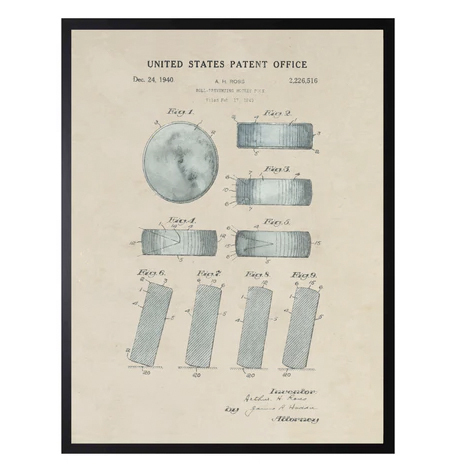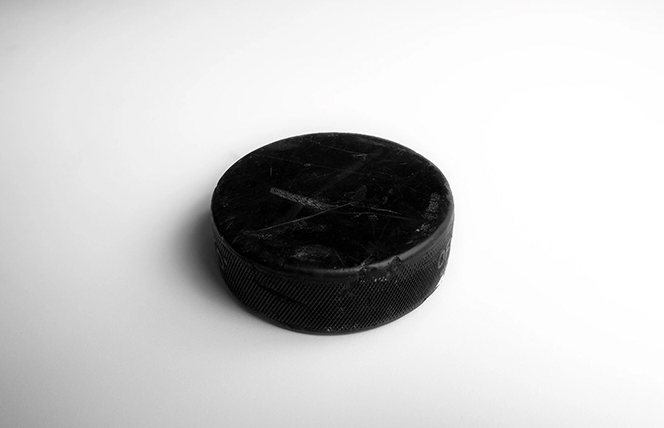Fast, fierce, and iconic — the hockey puck is the heart of the game. Though small and simple in appearance, the puck’s journey from minimalistic to high-tech mirrors the broader evolution of hockey equipment, and by extension, the sport itself. Its transformation reflects breakthroughs in technology and safety, as well as the rise of hockey as a cultural institution.
Why is the puck so central to the sport? It does more than just dictate the score; it shapes the flow, feel, and fairness of the game. From its humble beginnings to the vulcanized rubber hockey puck used today, this compact circle embodies the history, innovation, and spirit of hockey.
The puck’s evolution is as fascinating as it is foundational. In this guide, we’ll explore how the hockey puck came to be, how it’s changed over time, and why its legacy continues to shape the sport today.

Origins of the Hockey Puck
To understand the true history of the hockey puck, we must travel back to the frozen ponds of 19th-century Canada.
Before standardization, players fashioned pucks from materials at hand — most notoriously, frozen cow dung. Other early variations included wooden blocks, cut from tree limbs or furniture scraps, making gameplay unpredictable. These makeshift pucks often varied in size, weight, and texture from game to game, which forced players to constantly adapt.
Unsurprisingly, these early hockey puck materials were far from ideal. Wooden pucks would bounce erratically and splinter on impact, while frozen dung would shatter or degrade. Yet these rudimentary objects allowed early players to create a game where no formal equipment existed, demonstrating the sport’s grassroots origins and DIY ingenuity.
This improvisation reflects how the broader evolution of hockey equipment began: from informal materials shaped by necessity, later refined through science and regulation. It was from these beginnings that the puck began its long transformation, one that would eventually align it with the growing professionalism and precision of modern hockey.

The Introduction of Rubber Pucks
By the 1870s, hockey spread across North America. Early adopters sought more consistent performance, so they began slicing rubber balls in half, creating flat discs better suited for the icy surface. These rubber pucks were more durable, easier to control, and safer than their wooden or organic predecessors.
The move toward the rubber puck was driven by necessity and innovation. Players demanded predictability in bounce and glide for competitive play. At the same time, industrial advances made rubber products more accessible; this convergence of demand and capability laid the groundwork for formalizing puck design across organized teams and early leagues.
This shift also coincided with changes to other equipment. Just as pucks evolved, so did sticks. The transition to wood or composite sticks improved strength, weight, and control — forming a synergy with puck design that elevated the quality of play. With a more reliable puck and improved gear, hockey took a major step toward becoming the fast-paced, skillful sport we know today.
Vulcanized Rubber and Beyond
The next watershed moment was the creation of the vulcanized rubber hockey puck. Vulcanization — the chemical treatment of rubber with sulfur — produced a tougher, more elastic material that could withstand the extreme force of modern hockey shots.
Adopted by professional hockey leagues in the early 20th century and standardized by the NHL in 1940, the regulation puck became a fixture of elite hockey. Each puck weighs six ounces and measures one inch thick by three inches in diameter, carefully designed for performance.
Further refinements include chilling pucks before games; frozen pucks reduce bounce and glide smoothly across ice, particularly under hot stadium lighting. This small but crucial innovation exemplifies the sport’s attention to detail, as even minor adjustments can influence shot accuracy, puck control, and game tempo in professional play.
In recent years, smart puck technology has entered the scene. Pucks embedded with microchips now track speed, trajectory, and location in real time. This development supports coaching, broadcasting, and fan analytics, representing a bold leap in the evolution of hockey equipment.
Like goalie gear changes made to boost protection and visibility, puck innovation underscores how science continues to enhance the game. Together, these advances highlight how a small piece of equipment can play a big role in the progression of the sport.

How Puck Evolution Influenced Hockey
The impact of puck design on gameplay has been profound. Improved glide and weight distribution enable faster passes, more accurate shots, and greater puck control — all factors that have reshaped the speed and intensity of the sport.
In the NHL, puck behavior directly affects game strategy. High-velocity shots, tight one-timers, and breakaway plays would be impossible with unpredictable materials. Safer puck composition has also reduced injury risk, especially for goalies and shot-blockers.
As the puck evolved, so too did the rulebook. Updates to hockey rules, including offside reviews and puck-out-of-play regulations, reflect the importance of consistent puck performance. This standardization supports player safety; inconsistent puck response can disrupt flow and increase collision risks.
The puck’s evolution runs parallel with upgrades in player stick options and the variety of types of hockey stick curves now available. Together, these improvements contribute to a game defined by precision and performance. Advancements allow players to enhance how they interact with the puck, especially when paired with the best hockey gloves for control.
Beyond function, the puck has become a tangible symbol of hockey’s heritage. It’s used in ceremonial faceoffs, featured in team logos, and collected as memorabilia. Whether it’s a young fan receiving a signed puck at their first NHL game or a player saving the puck from their first goal, these moments turn a simple tool into a treasured artifact.
Some of the most iconic moments in hockey history — from Pittsburgh Penguins playoff runs to gold-medal victories at the Olympics — are remembered through the puck’s path to glory. These special moments connect the puck to personal and national pride, storytelling, and sport mythology, all while deepening fan loyalty and forming emotional touchpoints that connect generations through the shared language of the game.
Many historic pucks now reside in institutions like the original Hockey Hall of Fame, where they’re preserved alongside game-worn gear and championship banners. This immortalization illustrates how an object once made of cow dung became a cultural cornerstone.

The Puck’s Place in Hockey History
The history of the hockey puck means more than equipment evolution; it captures the spirit of hockey itself. From the early hockey puck materials shaped by hand to the vulcanized rubber hockey puck that revolutionized gameplay, every stage of evolution has left its mark on the sport.
The puck’s trajectory has soared in tandem with changes in culture, science, and strategy. As gear becomes smarter and the game faster, the puck continues to adapt — carrying with it a legacy of grit, innovation, and passion.
Its small size belies its impact: the puck is the thread that ties together generations of players, coaches, and fans. And as the impact of puck design on gameplay deepens, one thing remains certain: the puck’s journey is far from over.


